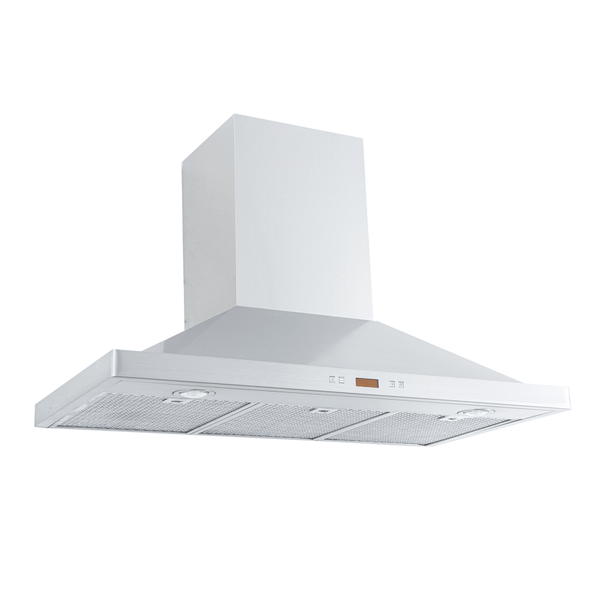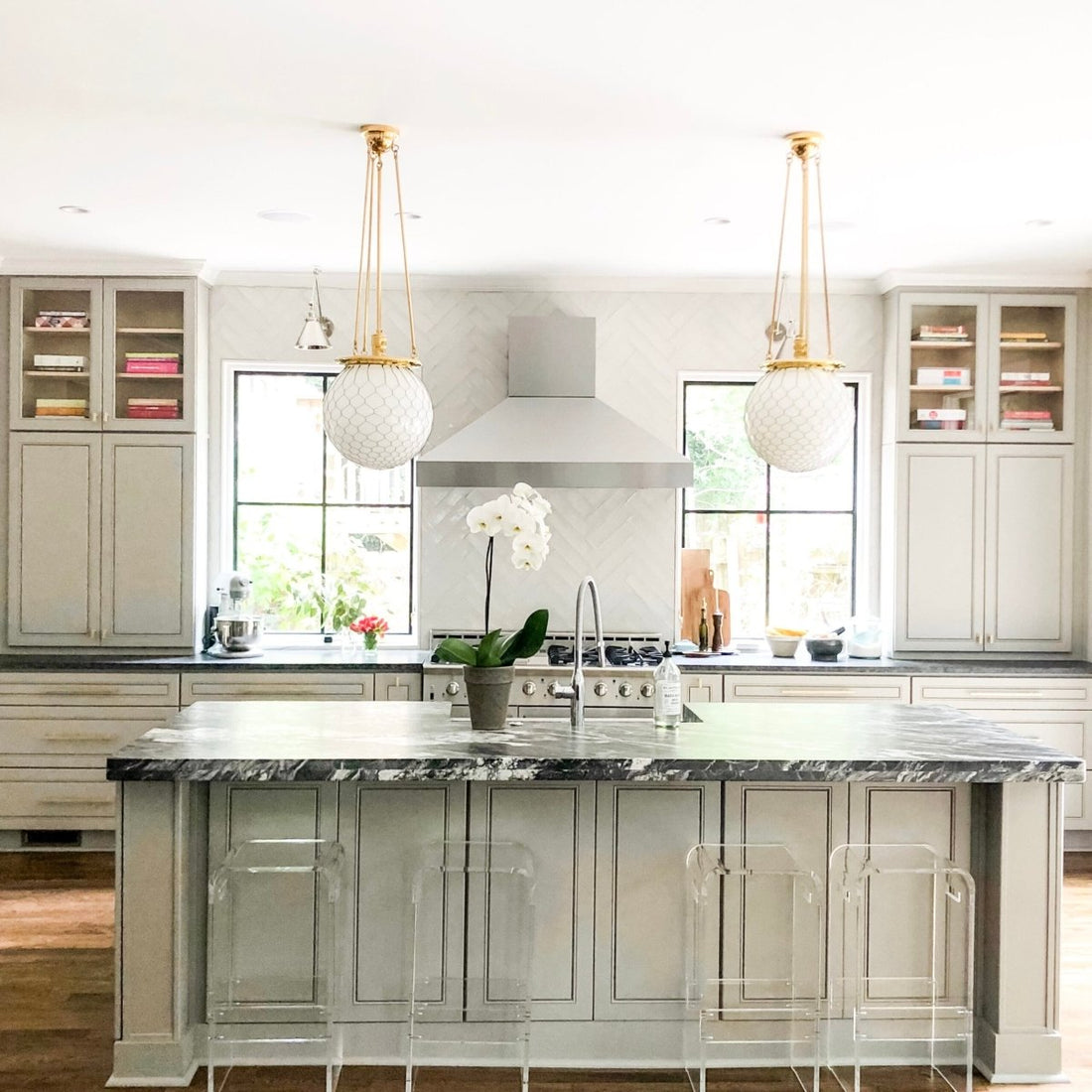Table of Contents
What You’ll Need
- Level
- Pencil
- Tape/Measure
- Drill
- Sheetrock Saw
- Pen, Pencil or Marker
- Screwdriver
- Extra fasteners
- Utility Knife or Razor Blade
What Comes in the Box
- Hardware Packet (includes mounting bracket, duct transition, and baffle filter handles)
- Three baffle filters
- Rubber gasket for duct transition piece
- Range hood mounting plate
- Chimney mounting bracket
- Chimney extension pieces
Before installation, be sure to test the range hood. For a complete checklist of what to do when you first receive your range hood so you don’t void your warranty, click here.

Step By Step Guide
1. Mark the bottom of the hood and a centerline on your wall in pencil.
This center line indicates where the center of your range hood will be mounted.
2. Cut a small hole in your ceiling for your ductwork.
To determine the size of this hole, use the duct transition piece. Using the center line you drew on the wall as a reference point, make a center mark on the ceiling as well. Line up the center of the transition piece with this mark and move it a couple of inches away from the wall. Then, trace around the transition.
Now you’re ready to cut the hole. Use your sheetrock saw to make your cut. Cut the hole just barely outside the pencil line if you’re using flexible ductwork. This ductwork is slightly bigger than the diameter of the transition piece.
3. Install the upper chimney bracket.
Use two fasteners (included with your hood) to mount your upper chimney bracket where your wall and ceiling connect.
If you're looking for a new drill, check out this great product on Amazon.
Or, if you prefer a screwdriver, you can find one on Amazon at this link.
4. Drop your ductwork through the ceiling.
5. Attach the duct transition piece to the top of your range hood.
Use the four included screws to attach this piece to your range hood. It will be easier to insert the four screws first and then apply the transition piece before screwing it in.
6. Make mounting bracket measurements to prepare for installation.
Align the mounting bracket with your range hood and screw in a couple of screws by hand to hold it in place. Now measure the height of the mounting bracket. In the above video, the height of the bracket is 14.5”.
Now, go to the wall and find your mark for the bottom of the hood, which you measured in Step 1. Measure 14.5” above this pencil line and make another line. This line indicates the top of your mounting bracket.
Once you’re done, measure the width of your mounting bracket and make note of the center of the bracket. Use a marker to indicate the center. Line up the mounting bracket against the wall and mark the eyelets and the center on the wall itself.
7. Drill through the eyelets and apply sheetrock anchors.
Attach mounting bracket to the range hood using the six screws that come with the hood.
8. Locate the nearest stud and mark with a pencil.
This step is necessary for you to later drill more screws into your range hood for additional support. If you need help finding a stud, you don’t need a stud finder. Check out this article for tips.
9. Install the screws into the anchors. Don’t drill the screw all the way into the wall; leave 3/10” to ¼” outside the wall so that your range hood can hang securely.
10. Hang your hood.
Once it’s mounted, tighten the two screws installed in Step 9.
11. Drill additional screws into the studs for additional support.
You can never have too much support – up to three screws is appropriate, depending on how secure your hood feels.
Should the slots on the front of a ducted range hood be covered?
The slots on a ducted range hood can be covered, but you can also leave them alone. You won't see many ducted hoods with these slots, since the air moves past the chimney, through the ductwork, and outside your home. Some ducted hoods have these slots because they are convertible hoods, which can convert from ducted to ductless. If you have a ductless hood, do not cover these slots. Air recirculates back into your kitchen through these slots.
Final Steps
Run Power to the Hood
All range hoods from Proline come with a 4’ cord. If this isn’t long enough, you can use an extension cord.
Attach the ductwork to the duct transition piece.
Wrap metal tape around the ductwork connecting to the transition piece.
Install Chimney
This model’s chimney is telescoping – first, condense it entirely, set it on your transition piece, and then apply the bottom screws on opposite sides of the chimney. Then, bring the chimney up your ductwork and apply the top screws.
Assemble and insert baffle filters.
Finally, you’ll need to assemble the handles on your baffle filters. The range hood filters have small holes meant for screws. Insert the screw first and then attach each part of your handle one at a time. Gravity will help you attach the handles if you insert the screws first. You also need to install a screw in front of each filter that will easily fasten into the metal.
Now you’ve completed your installation! Thanks for reading our guide on how to install the PLJW 129 wall mounted range hood!
Related Articles:
Don’t Install Your Range Hood Until You Read This Ultimate Guide!












